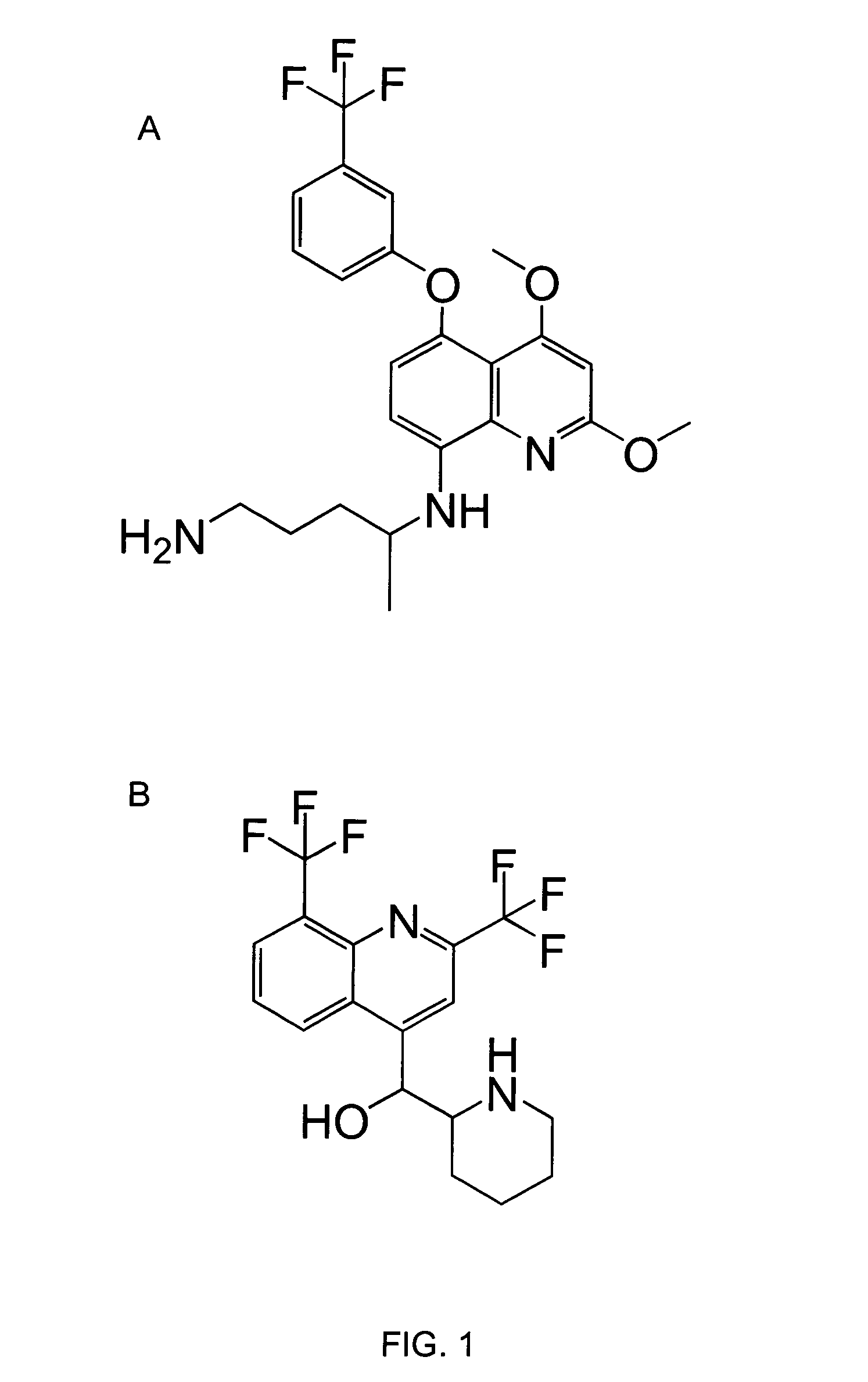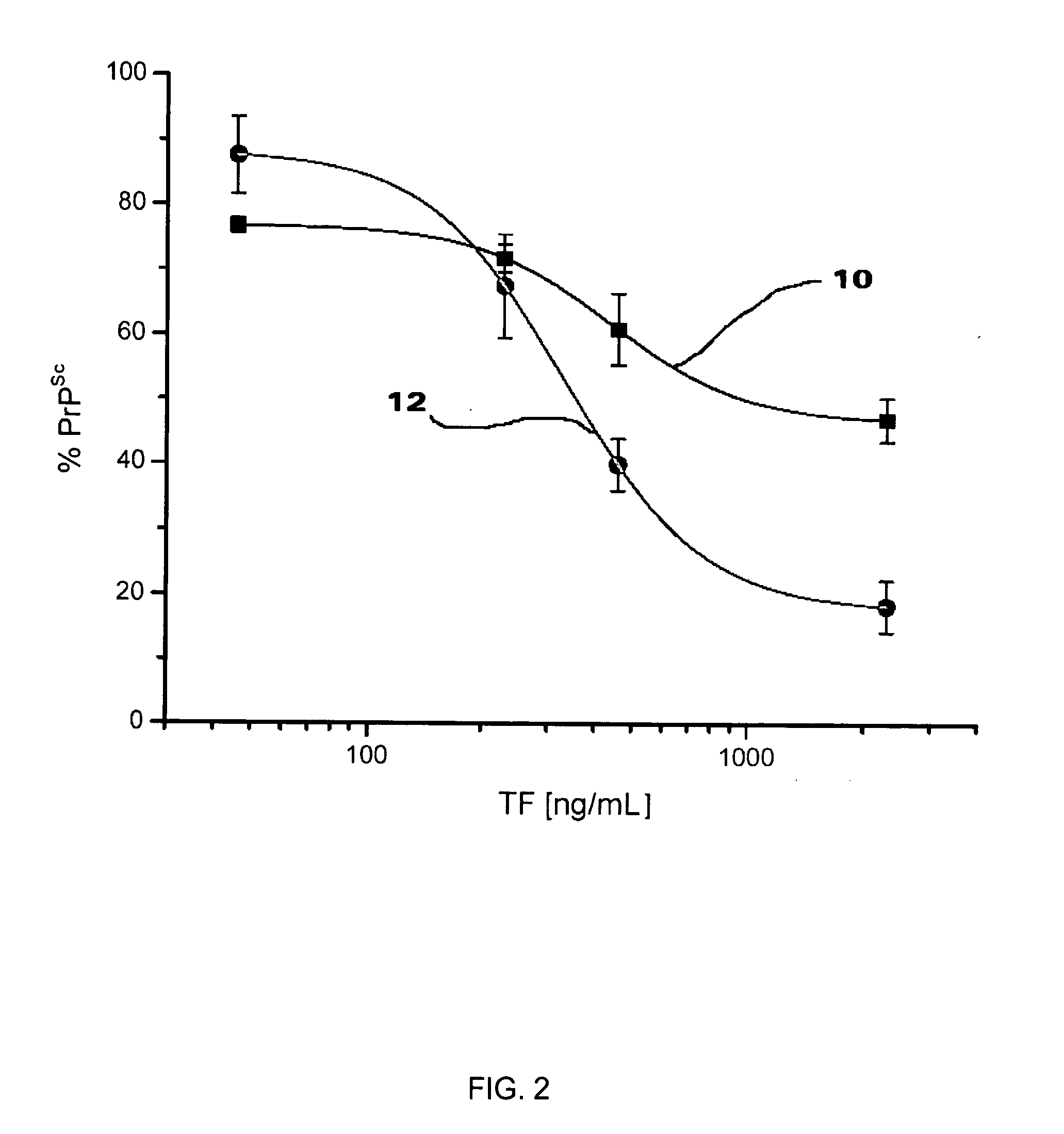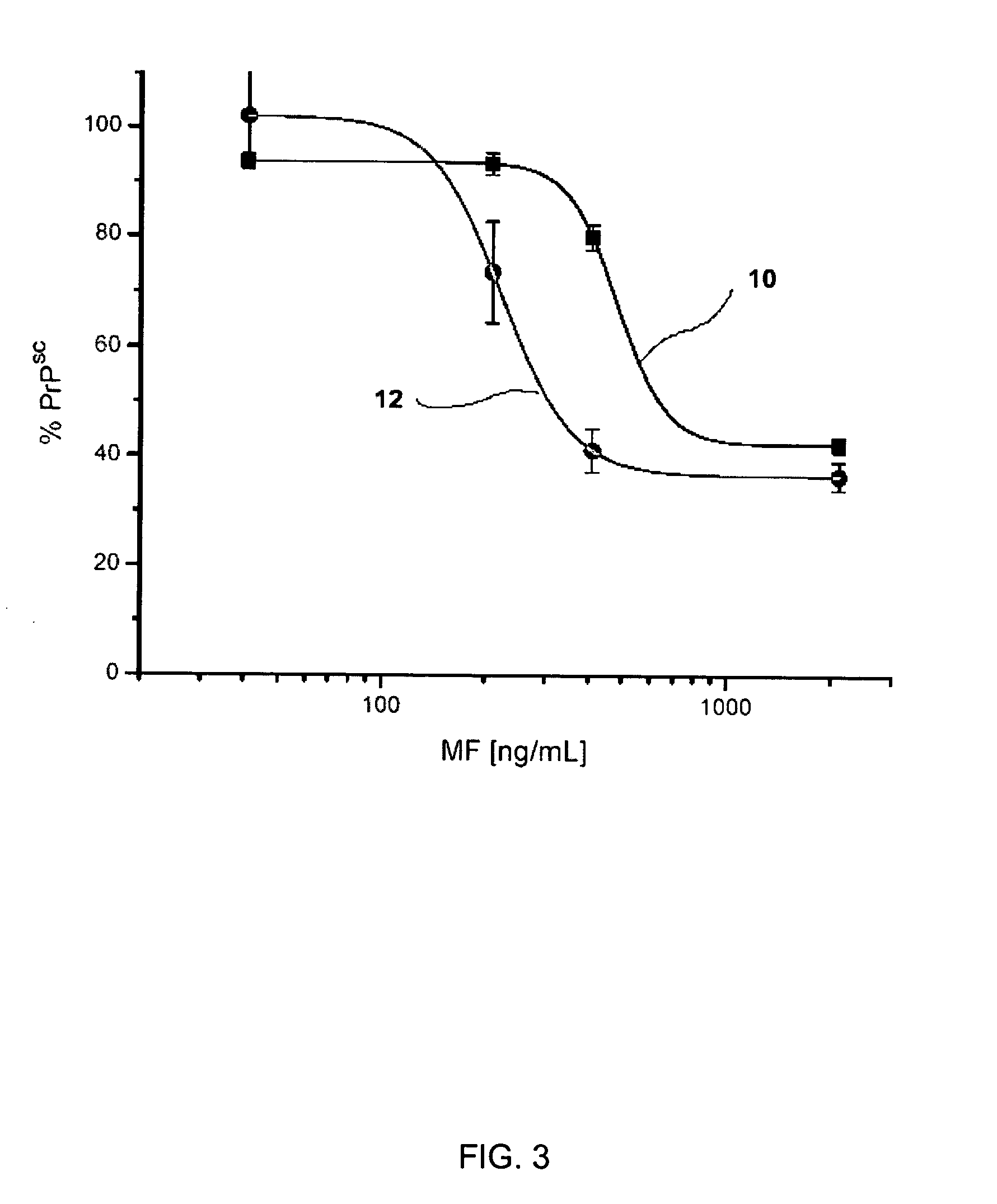Methods and compositions for treating diseases associated with pathogenic proteins
a technology of pathogenic proteins and compositions, applied in the field of compositions for and methods of treating diseases associated with pathogenic proteins, can solve the problems of serious health problems for the public and the daunting task of tse patients, and achieve the effect of preventing prion infections
- Summary
- Abstract
- Description
- Claims
- Application Information
AI Technical Summary
Benefits of technology
Problems solved by technology
Method used
Image
Examples
example 1
The Formation and Accumulation of PrPSc in Scrapie-Infected Neuroblastoma Cells is Inhibited by Tafenoquine
[0157] Inhibition of PrPSc formation was tested in scrapie-infected mouse neuroblastoma cells as follows. Approximately 20,000 RML (Bosque et al. (2000) J. Virol. 74, 4377-4386) or 22L scrapie-infected mouse neuroblastoma cells were added to each well of a 96 well plate in 100 μL of medium prior to the addition of tafenoquine. 22L-Infected cells were developed by re-infection of RML-infected mouse neuroblastoma cells (N2a) cured by 7 passages in medium containing 1 μg / mL pentosan polysulfate (Priola et al. (1994) Infect. Agents Dis. 3, 54-58). The cured cells were re-infected by incubation with PrPSc purified from mouse brains infected with 22L strain of scrapie. The neuroblastoma cells reinfected with 22L scrapie have stably expressed PrPSc for over 70 passages. The cells were allowed to settle for 4 hours before tafenoquine was added.
[0158] 10 mM solutions of tafenoquine we...
example 2
The Formation and Accumulation of PrPSc in Scrapie-Infected Neuroblastoma Cells is Inhibited by Mefloquin
[0160] The procedure described in Example 1 was repeated, using mefloquin as the active agent. As shown in FIG. 3, mefloquine was able to inhibit PrPSc formation in the 22L- and RML-infected ScN2a cells after five days of growth in the presence of mefloquine. The activity was greater against RML- than 22L-infected cells. The IC50 value for mefloquine was 224 ng / mL (0.54 μM) in the RML-infected cells, compared to an IC50 of 482 ng / mL (1.2 μM) for the 22L-infected cells. Thus, both the formation and accumulation of PrPSc in mammalian cells was inhibited by the administration of mefloquin.
example 3
The Formation and Accumulation of PrPSc in Scrapie-Infected Neuroblastoma Cells is Inhibited by Compound 3
[0161] The procedure described in Example 1 was performed, using compound 3 as the active agent. As shown in FIG. 4, test compound 3 (shown in Table 1 above) was able to inhibit PrPSc formation in the 22L- and RML-infected ScN2a cells (squares and circles, respectively) after five days of growth in the presence of compound 3. The IC50 value for compound 3 was 264 ng / mL (0.54 μM) in the RML-infected cells, compared to an IC50 of 220 ng / mL (1.2 μM) for the 22L-infected cells. Thus, both the formation and accumulation of PrPSc in mammalian cells was inhibited by the administration of compound 3.
PUM
| Property | Measurement | Unit |
|---|---|---|
| Weight | aaaaa | aaaaa |
| Time | aaaaa | aaaaa |
| Electrical resistance | aaaaa | aaaaa |
Abstract
Description
Claims
Application Information
 Login to View More
Login to View More - R&D
- Intellectual Property
- Life Sciences
- Materials
- Tech Scout
- Unparalleled Data Quality
- Higher Quality Content
- 60% Fewer Hallucinations
Browse by: Latest US Patents, China's latest patents, Technical Efficacy Thesaurus, Application Domain, Technology Topic, Popular Technical Reports.
© 2025 PatSnap. All rights reserved.Legal|Privacy policy|Modern Slavery Act Transparency Statement|Sitemap|About US| Contact US: help@patsnap.com



